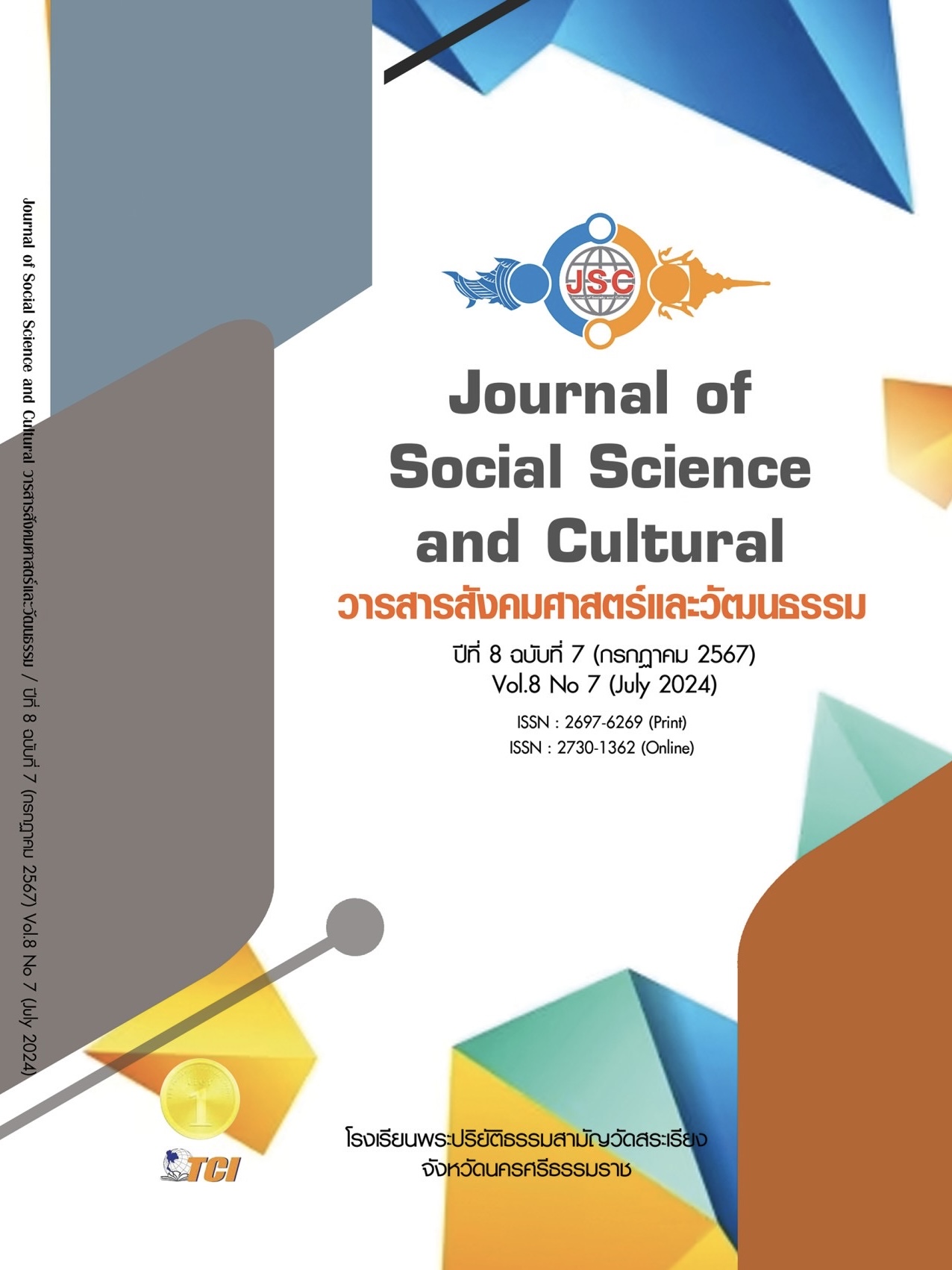THE DIGITAL ARTS INSTRUCTIONAL MODEL ON MOBILE APPLICATIONS TO ENHANCE WELL-BEINGS OF THE ELDERLY
Main Article Content
Abstract
This research has two objectives: 1) to study the data on the digital arts instructional model with mobile applications to enhance the well-beings of the elderly and 2) to develop a model for the digital arts instructional model with mobile applications to enhance the well-beings of the elderly by using a research and development method. The first phase was interviewing sample groups who were 20 elderly people aged 60 years or over and 14 experts, which were selected from purposing samplings along with observing teaching activities to collect data for creating tools used in the second phase of the research that were assessment, questionnaire, interviews and behavior observation forms. The results of the study found that 1) The elderly as the main population had become the obstacle to develop nation due to illness, abandonment, retirement and social changes from the past. Indeed, the way to create the digital arts instructional model with mobile applications to enhance the well-beings of the elderly was consisted of objectives, content, learner as elderly, teachers, instructional model, media, atmosphere and evaluation, and 2) create AAWE teaching model (Art Applications for Well-beings of the Elders Teaching Model) was used to sample groups of 90 elderly people in the second phase. It was divided into 9 activities with 10 people each in 3 techniques: drawing, photography and image editing., and edit video clips. Each technique was classified into topics up to the elderly interests in the environment, people, and careers. The teaching activity was consisted of 6 steps: preparation, teaching and demonstration, expression, presentation, exhibition, and evaluation by using art together with digital on the application that is virtual and can enhance well-beings for the elderly by focusing mainly on the mental and social aspects.
Article Details
References
กรมกิจการผู้สูงอายุ. (2565). แผนปฏิบัติราชการกรมกิจการผู้สูงอายุ ระยะ 5 ปี (พ.ศ. 2566 - 2570). เรียกใช้เมื่อ 9 กรกฎาคม 2567 จาก https://www.dop.go.th/th/laws/1/35/845
ปัญจวัฒน์ จูมลี และคณะ. (2564). ผลของโปรแกรมกิจกรรมศิลปะแบบกลุ่มต่อการเห็นคุณค่าในตนเองและภาวะซึมเศร้าของผู้สูงอายุในศูนย์พัฒนาการจัดสวัสดิการสังคมผู้สูงอายุ. วารสารคณะพยาบาลศาสตร์ มหาวิทยาลัยบูรพา, 29(2), 47-58.
พนม คลี่ฉายา. (2564). การใช้เทคโนโลยีดิจิทัลของผู้สูงอายุและข้อเสนอเพื่อการเสริมสร้างภาวะพฤฒิพลังและผลิตภาพของผู้สูงอายุไทย. วารสารนิเทศศาสตร์, 39(2), 57-78.
พนิดา ภู่งามดี. (2566). แนวคิดการใช้ศิลปะพัฒนาชีวิตผู้สูงวัยในภาวะสังคมผู้สูงอายุ. วารสารมนุษยสังคมศาสตร์, 1(2), 11-20.
วรางคณา โตโพธิ์ไทย. (2563). สื่อสังคมเพื่อการเรียนรู้สำหรับผู้สูงอายุ. วารสารเทคโนโลยีและสื่อสารการศึกษา, 15(19), 1-14.
สำนักงานส่งเสริมเศรษฐกิจดิจิทัล. (2565). แผนแม่บทการส่งเสริมเศรษฐกิจดิจิทัล ระยะที่ 2 (พ.ศ. 2566 - 2570). เรียกใช้เมื่อ 9 กรกฎาคม 2567 จาก https://www.depa.or.th/storage/app/media/file/3_%20DEP%20plan%2066-70_master-plan_compressed.pdf
Faber, M.V. et al. (2020). Engaging Older People in Age-Friendly Cities through Participatory Video Design. Public Health, 17(2020), 1-15.
Keisari, S. et al. (2021). Crafting Life Stories in Photocollage: An Online Creative Art-Based Intervention for Older Adults. Retrieved July 15, 2024, from DOI: 10.3390/bs12010001
MacRitchie. J. et al. (2023). The use of technology for arts-based activities in older adults living with mild cognitive impairment or dementia: A scoping review. Dementia, 22(1), 252–280.
Xue, M. et al. (2022). Digital Arts and Health. Retrieved July 9, 2024, from DOI:10.1007/978-3-031-20212-4_3

